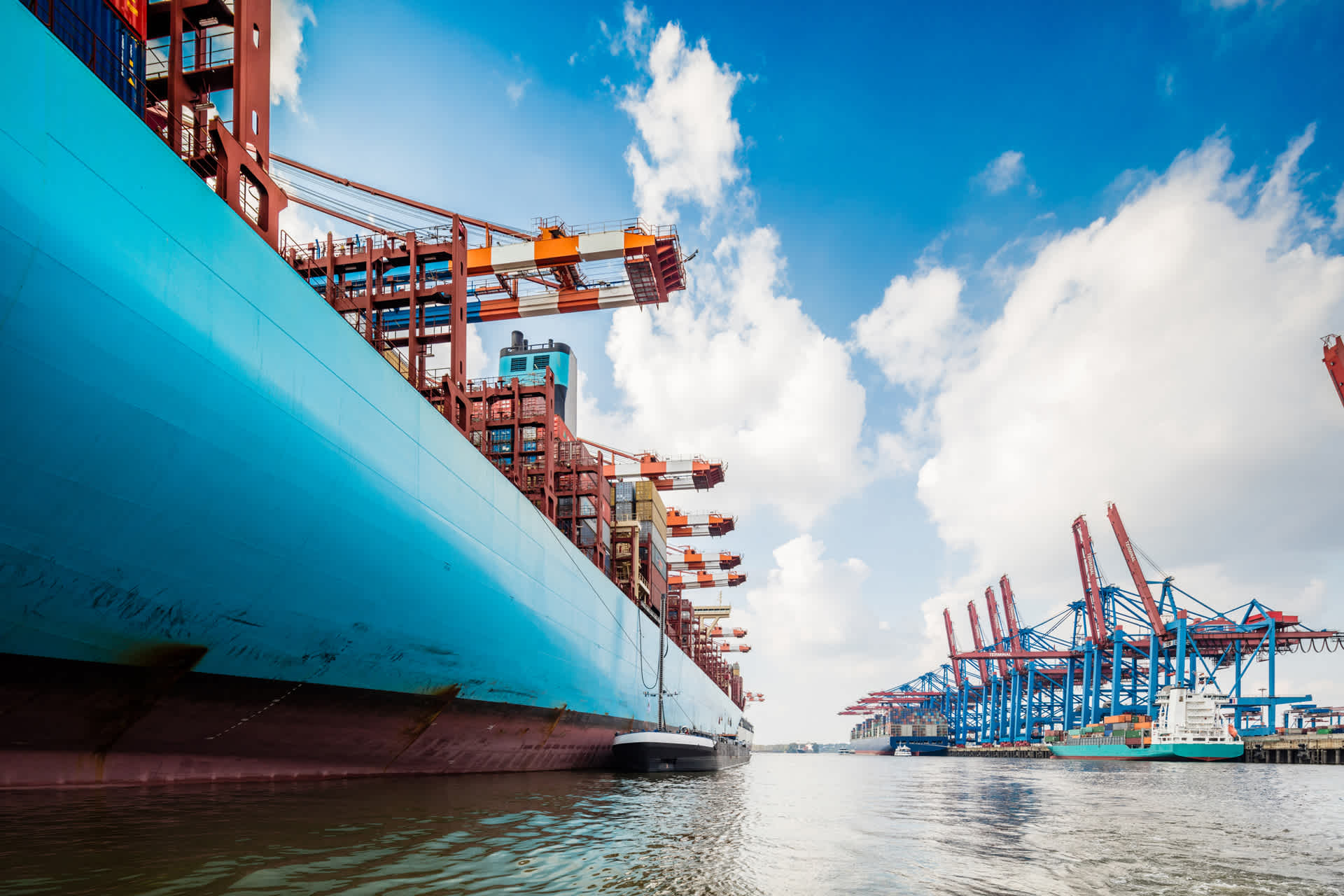Global Logistics Update
Freight Market Update: March 1, 2022
Ocean and air freight rates and trends; customs and trade industry news plus Covid-19 impacts for the week of March 1, 2022.
Freight Market Update: March 1, 2022
European Freight Market Update Live: March 8 at 16:00 CET / 15:00 GMT
Get the latest information on the European ocean and air freight markets. Spend 30 minutes with our experts, including time for Q&A.
Logistics Rewired: Navigating Supply Chain Complexities in LATAM
March 9 at 9:00 am PST | 12:00 pm EST | 6:00 pm CET
Join Flexport as we take a closer look at the growing LATAM market and the unique complexities operating in the region brings. What challenges and opportunities does the region provide? What does the future hold? Join our panel of experts as we discuss this, and more.
Ocean Freight Market Update
Asia → North America (TPEB)
- Rates remain strong and space outlook is expected to remain tight on TPEB. The moving market is primarily at premium levels. FAK space remains limited as capacity overall remains insufficient. Congestion is expected to continue to worsen, given market volatilities and global uncertainties. Fuel increases and disruptions to trade due related to the conflict in Eastern Europe as well as expected effects of the upcoming ILWU labor negotiations are important to bear in mind.
- Rates Rate levels remain elevated and the premium market is strong.
- Space Critical
- Capacity/Equipment Critical/Severe Undercapacity
- Recommendation Book at least 4 weeks prior to CRD. Consider premium options. Be flexible in regard to equipment and routings.
Asia → Europe (FEWB)
- Following a slower period after Lunar New Year we are now starting to see some volume recovery and increased booking intake. However, the overall volume level still remains lower than pre-LNY. Space and equipment continue to be tight due to a very high amount of blank sailings in weeks 9 and 10. Towards the second half of March, a more normal capacity will resume. Schedule reliability is very low with many vessel shiftings and changes.
- Rates Rates remain at a high level for the post-LNY period. Carrier rates have been extended or reduced for the first half of March based on the booking outlook.
- Space Critical space situation
- Capacity/Equipment Severe equipment shortage across all Asia origins.
- Recommendation Book at least 3 to 4 weeks prior to CRD. Consider premium options, which may be limited. Be flexible in regard to equipment.
Europe → North America (TAWB)
- Congestion at USEC ports worsening with new delays on all major ports with waiting times going from 6 to 8 days. USWC waiting time not improving despite yard congestion being cut by almost a third. Hamburg CTA terminal facing issues due to recent bad weather which is causing delays in export containers and also in equipment availability at the terminal.
- Rates Ocean levels continue to raise with PSS increase announced for March rates.
- Space Critical, especially to the USWC
- Capacity/Equipment Capacity remains tight for both North Europe and Mediterranean services. Better equipment availability at port. Shortages remain at inland depots.
- Recommendation: Book 5 or more weeks prior to CRD. Request premium service for higher reliability and no-roll guarantees.
Indian Subcontinent → North America
- New port omissions hitting key USEC services as congestion remains a challenge at Charleston, Savannah, Norfolk, and New York.
- Rates trending upwards into March. Premium rate levels should be expected for small Indian ports and Bangladesh as demand exceeds vessel/equipment supply.
- Space to the USWC is and will remain a challenge into 2022. Port omissions on services to the USWC continue to cut capacity out of the ISC. Recommendation is to move on premium services or look for alternative routing to USEC and transload to final destination.
- Space to the USEC will be difficult into Savannah, Charleston, and New York until April as bunched vessels off the coast of USEC are resulting in longer turn-around time back to origin and port of discharge omissions. This leaves a gap of sailings for the most consistent services typically relied upon for ISC-USEC.
- Equipment remains a challenge at smaller Indian ports in the South and South-East as well as inland container depots (ICDs). Carriers are encouraging shippers’ use of their own origin carriage services to mitigate equipment shortages. Equipment is normalized at key ports such as Nhava Sheva and Mundra.
- Recommendation remains to load via wet port instead of using ICDs to avoid delays and accessorial fees.
North America → Asia
- Vessel arrivals and available capacity remain fluid for USWC POLs. Rail availability over the USWC is limited as carriers are strictly adhering to allocations. USEC situation sees Savannah operations improving however port omissions continue for the South Atlantic affecting both Savannah and Charleston ports. Erratic vessel schedules continue to create void sailings and delays in schedules creating significant challenges with posted earliest return dates and vessel cut-offs at the port.
- Rates Limited GRI activity announced for March.
- Equipment Deficits on containers and chassis continue to plague IPI origins. Availability for standard equipment at ports has not been an issue, but any special equipment is hard to come by.
North America → Europe
- There is available capacity on the TAEB trade from the US East and Gulf Coasts but schedule issues persist for New York, Charleston and Savannah. US West Coast service to Europe is extremely tight due to void sailings and skipped ports caused by systematic delays. Seattle port of call remains suspended indefinitely. All carriers have advised of service suspensions to Odesa, Ukraine, and anticipate all carriers will suspend service to Russian ports as well.
- Rates One GRI anticipated for Mediterranean destinations for March.
- Equipment Deficits are still plaguing IPI origins. Availability for standard equipment at ports has not been an issue, but any special equipment is hard to come by.
- Recommendation Please place bookings 3 to 4 weeks in advance for East Coast/Gulf sailings and 6 weeks for Pacific Coast sailings.
Air Freight Market Update
Asia
- N.China: The demand market slowly recovers with strong demand for Testing kit projects resulting in the rates increasing week over week. Due to the conflict between Ukraine and Russia, Russia-based airlines have canceled all their flights to EU.
- S. China: Market demand is declining faster than supply, causing further rate decreases week over week. Covid remains a key issue in South China with the number of cross-border trucks reduced. Some TPEB flights remain canceled and overall demand is soft with rates continuing to drop. FEWB rates also continue to drop as demand is still slow to recover.
- Taiwan: Capacity is expected to become slightly congested this week. The fuel surcharge will also increase starting on March 1. Overall, cargo demand is relatively flat and origin congestion has improved compared to previous weeks.
- SE Asia: Demand ex-Vietnam and Thailand continues to be very soft with little indication when the market will pick back up. This situation may last until mid-March.
Europe
- Demand remains modest this week, bigger projects are still on the market as shippers need to meet lead times from production delay.
- Rates at a stable high level, in line with what we see at the beginning of March. Fuel surcharges are however increasing as the IATA jet fuel index hits the highest rates since 2015. Expect these high fuel surcharges to be passed through by the airlines for the coming months as the crisis in Ukraine continues.
- Russian carriers are banned from European airspace, and a number of carriers are banned from Russian airspace. Capacity is otherwise stable.
- Deferred routings are still providing a viable routing option if already tight lead times can take it. We also see cheaper options on the market to secondary hubs where airlines have regular passenger flights.
- Limited terminal congestion reported across EU hubs.
- Advice remains in place ex-EU: continue to place bookings early for optimal rates and solutions.
Trucking & Intermodal
Americas
- US Import/Export Trucking Market Trends
- The expanding cartage network has positioned Flexport to move air and LCL cargo with the speed our clients demand. The percent of intact ULD’s recovered within 12 hours of arrival increased to 55% from 15% in January. Short haul deliveries (final mile between 61-150 miles) have made a dramatic improvement to 126 hours from arrival to delivery, with the goal being 96 hours. We are seeing CFS congestion continue to decline as well, with the OTP gap between warehouse legs and direct to door being nearly erased. Both OTP metrics have improved by 400% since the peak of CFS congestion seen in early January.
- Port congestion has rapidly increased across several East Coast ocean ports which has negatively impacted trucker’s productivity and chassis availability - and in turn depleted overall drayage capacity. From Houston and the Gulf Coast markets up to NYNJ, continuous record import volume has overwhelmed the port and trucking infrastructure leading to an increasing backlog of containers & vessels at anchor awaiting berth.
- The Port of CHS has the highest import dwell time and vessel backlog currently on the EC. Import containers are dwelling an avg of 10 days on terminal before pickup - and ⅓ of the total containers at Wando terminal have been dwelling 15+ days. As of this writing, 30+ vessels were awaiting a berth at CHS to unload.
- West Coast ports are seeing a temporary decrease in the number of vessels at port, congestion issues will persist during March due to the lack of chassis and high terminal yard utilization across the WC.
- FSC will likely increase in March as diesel prices continue to rise.
- The Quebec Ministry of Transport has issued its regulations for the annual Spring Thaw Period, which reduces the authorized load limits on all public roads (8 to 20% weight reduction). The weight restrictions apply to all truck movement to and from Quebec. See below the Thaw Period Dates and Zones:
- Zone 1: From Monday, March 7 (00:01) to Friday, May 6 (23:59)
- Zone 2: From Monday, March 14 (00:01) to Friday, May 13 (23:59)
- Zone 3: From Monday, March 21 (00: 01) to Friday, May 20 (23:59)
- US Domestic Trucking Industry Update
- Supply/Demand
- Capacity Update: We are still expecting continued challenges with capacity throughout 2022. It is difficult to tell whether or not we will see equipment and/or driver issues begin to improve as the year progresses, but no clear improvements are expected in the short term.
- Demand Update: Spot volumes surged in January as continued bouts of severe winter weather and surging COVID case counts made it difficult for capacity networks to find balance. Throughput at the ports and in manufacturing and industrial production continues to act as a bottleneck for freight volumes as there are no signs of a pullback in overall freight movements or demand. We expect to see a slight pullback in spot volumes as a result of improved contract compliance for the remainder of the first quarter, assuming we see stable weather conditions and a continuation of declining COVID case counts.
- Truckload Demand: Elevated contract rates are resulting in improvements to tender rejections, but only as conditions allow. When capacity is disrupted or driver shortages are exacerbated by surging COVID cases, we expect to see volatility followed by a return to the downward trend once stability is seen. With demand expected to remain strong, easing pressures will only come as fast as capacity can enter the market. In the short term, we expect the next opportunity for surges in market volatility, excluding weather events or other unforeseen events, will be in the back half of March as we approach the end of the first quarter.
- Supply/Demand
- Looking Ahead
- The outlook for conditions, as we look ahead in 2022, will continue to largely depend on what we see from truckload demand. Congestion at the ports and backlogged orders in manufacturing and industrial production indicate that we should expect demand strength to continue. Inflation and the expiration of government stimulus will continue to result in a reduction in consumer spending power, likely leading to pullbacks in consumer demand. There has been little to no improvement in capacity conditions, which continued to see challenges with driver and equipment availability. COVID case counts have improved, but new surges have shown the potential to be highly disruptive to both domestic and overseas labor availability, and influence the balance of spending between durable goods and services.
Customs and Compliance News
House Introduces Bill to Limit Trade Ties to Russia
In light of Russia’s invasion of Ukraine, two Members of Congress introduced legislation to severely curtail the US’s trade relationship with Russia. The bill calls for imports of Russian origin to lose normal trade relations (NTR) status; instead, imports would be subject to “Column 2” status and face higher tariffs and increased CBP scrutiny. However, the bill’s impact would have a limited impact, as US trade ties to Russia are small.
The Ocean Shipping Reform Act Reaches the Senate
On March 3, the US Senate will hold a hearing for the Ocean Shipping Reform Act, which the US House of Representatives recently passed. The America COMPETES Act also includes the Ocean Shipping Reform Act, enabling the bill to pass through Congress via a variety of paths.
Factory Output News
- Taiwan joins sanctions against Russia, TSMC suspended semiconductor export to Russia Source
- Vietnamese and Singaporean businesses signed corporation deals valuing 11 billion USD in view of boosting investments and trades between both countries Source
- Cambodia and China Guangxi signs deal to promote bilateral trade with China mainly interested in purchasing agricultural produce Source
- Thailand to increase production of cars to 2 million per year by 2024 Source
- Malaysia Infineon will be building its third manufacturing line in northwestern Malaysia Source
- Indonesia announced plans to place two million electric vehicles (EV) on the road by 2025. This is part of the government’s greater plan to transition the country into the use of renewable energy and become a leader in EV manufacturing Source
Freight Market News
Supply chains impacted by Russia’s invasion of Ukraine The attack on Ukraine and sanctions enacted on Russia are expected to prompt shortages of key materials, drive already present inflation, and impact ocean and air shipping capacity, as reported by FreightWaves. Spot rates for container shipments are already up 16% out of Europe, and shippers are anticipating emergency fuel surcharges from ocean carriers, according to The Loadstar.
Read more: Routes, not Jets - Impact of Ukraine Conflict on Airfreight
FMC and DOJ double down on enforcing fair competition in shipping Supply Chain Dive has reported that the Federal Maritime Commission and the Department of Justice have announced a joint commitment to enforcing competition rules in maritime shipping. This announcement follows the White House’s efforts to promote competition as a means of lowering prices and strengthening the overall resilience of supply chains.
Freight Market Update is a complimentary service from Flexport, the modern freight forwarder. If you're not already a subscriber, we invite you to subscribe here.
Please note that the information in our publications is compiled from a variety of sources based on the information we have to date. This information is provided to our community for informational purposes only, and we do not accept any liability or responsibility for reliance on the information contained herein.


